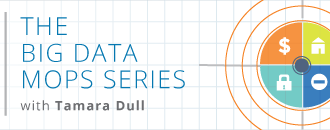This is unequivocally the era of big data — but it is not necessarily the era of big data security. The terrifyingly massive breaches of major corporate databanks, including Home Depot, Target, Niemen Marcus, and most recently Ashley Madison, reveals that most big data collectors are not doing nearly enough to protect their precious information from prying eyes. Without serious changes in security protocols across the board — from consumers to producers to vendors — big data will only increase in its appeal as a target for malicious hackers.
This is unequivocally the era of big data — but it is not necessarily the era of big data security. The terrifyingly massive breaches of major corporate databanks, including Home Depot, Target, Niemen Marcus, and most recently Ashley Madison, reveals that most big data collectors are not doing nearly enough to protect their precious information from prying eyes. Without serious changes in security protocols across the board — from consumers to producers to vendors — big data will only increase in its appeal as a target for malicious hackers.
Unfortunately, there are a number of issues preventing most big data collectors from adequately protecting their hoards. However, those issues have solutions which may ensure a long future of big data — as long as you and everyone else enacts them.
Major Big Data Security Challenges
Traditional security mechanisms, like the firewalls and antivirus software currently installed on your computers, are not nearly adequate to safeguard big data. The problem is that these measures are developed to protect small-scale, static information — the dozens of files that you have saved on your hard drive — rather than dozens of terabytes-worth of information that comes from the cloud. Instead, sufficient security for big data must be flexible and fast, allowing for quick streaming and multiple points of entry.
In a conversation with members of the Cloud Security Alliance (a nonprofit organization determined to improve cloud safety) revealed a number of weaknesses in the ways modern businesses use big data. These include:
- Secure computations in distributed programming frameworks. Programs that perform multiple phases of computations must have multiple protections: one for the programs and one to protect the data from the programs.
- Security for non-relational data stores. Also called NoSQL, non-relational stores continue to evolve, and as they do, appropriate security must mature along with them.
- Secure data storage. In the past, IT managers had direct control over where and when data moved among tiers, but with big data, manual movement is untenable. Auto-tiering requires additional security mechanisms.
- Endpoint input validation. When a system receives millions of inputs, as big data collections usually do, one must make certain that every input is trustworthy and valid.
- Real-time security monitoring. As yet, real-time security is not excellent at pinpointing true security threats, and thousands of false-positives are generated every day.
- Data mining and analytics that preserves privacy. Big data is a step away from Big Brother, as it can compile intensely private information without consumers’ awareness or consent.
- Encrypted access control and secure communication. For total security, data must be encrypted end-to-end, but it also must be efficient and available to those who need it.
- Granular access control. Not all data is equally confidential, and companies should be able to filter their security to share as much as possible while keeping only the most sensitive information safe.
- Scalable audits. To learn from breaches in security, there must be detailed audits available for review; however, due to the size of big data, these reports must also be scalable to the incident.
- Data provenance. Provenance continues to grow in complexity, but analysis of provenance graphs is already computationally demanding.
Suggestions to Improve Big Data Security Effectiveness
Cloud experts believe that the most sensible guide for the improvement of big data security is the antivirus industry. Already decades-old, antivirus software has a bevy of experience battling all sorts of different threats. There are myriad antivirus providers out there (try Top10AntivirusSoftware for ratings and reviews of major ones), and all of them are tried and true when it comes to protecting data against the infiltration of nasty digital bugs.
However, what cloud experts most value about the antivirus industry is its openness regarding data. Rather than locking up their security secrets to gain an edge on competitors, antivirus vendors (to include non-governmental organizations, public institutions, and even private enterprises) freely communicate threat data with one another. Industry leaders can work together to combat new and dangerous malware, and computers everywhere can stay safe. This liberated communication and lack of destructive competition is exactly what big data needs to build strong security fast and efficiently.
Already, organizations like the Cloud Security Alliance are attempting to collaborate for the sake of cloud protection, but as yet there is not enough trust in the industry to create true progress. You should support efforts for organized teamwork to ensure big data stays big and strong into the future.









